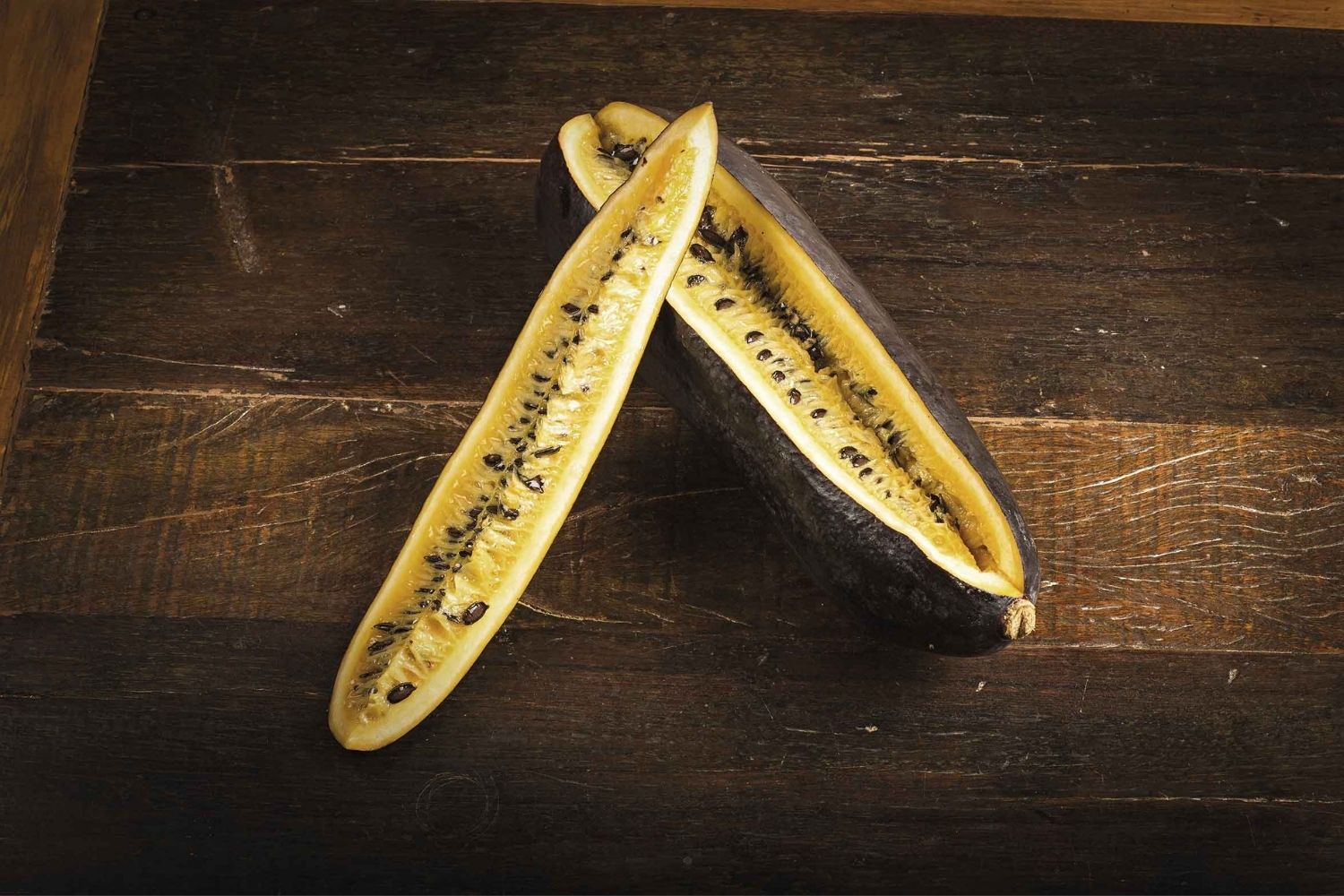
Cassabanana, also known as Sicana odorifera, is a tropical fruit that might not be on your radar yet. This vibrant, elongated fruit is native to South America and boasts a unique blend of flavors, often described as a mix between melon and cucumber. Did you know that cassabanana can grow up to 60 centimeters long? It's not just the size that's impressive; the fruit is also packed with nutrients, making it a healthy addition to your diet. But what else makes cassabanana special? From its striking appearance to its versatile uses in cooking, there’s a lot to learn about this fascinating fruit. Whether you're a fruit enthusiast or just curious, these 25 facts will give you a deeper appreciation for cassabanana.
What is Cassabanana?
Cassabanana, also known as Sicana odorifera, is a tropical fruit native to South America. This fruit is not only known for its unique taste but also its impressive size and vibrant color. Let's dive into some fascinating facts about this exotic fruit.
-
Cassabanana is a member of the Cucurbitaceae family, which includes cucumbers, melons, and squash.
-
The fruit can grow up to 60 centimeters (24 inches) long and weigh as much as 4 kilograms (8.8 pounds).
-
Cassabanana has a bright orange or red skin when ripe, making it visually striking.
-
The flesh inside is typically yellow or orange and has a sweet, aromatic flavor.
Growing Conditions and Cultivation
Cassabanana thrives in tropical climates and requires specific conditions to grow successfully. Here are some interesting facts about its cultivation:
-
Cassabanana plants need full sun exposure to produce healthy fruits.
-
They prefer well-drained, fertile soil with a pH between 6.0 and 7.5.
-
The plant is a vigorous climber, often requiring a sturdy trellis or support structure.
-
Cassabanana can be propagated from seeds or cuttings, making it relatively easy to cultivate.
Nutritional Benefits
Cassabanana is not just a treat for the taste buds; it also offers several nutritional benefits. Here are some key points:
-
Cassabanana is rich in vitamins A and C, which are essential for immune function and skin health.
-
It contains dietary fiber, aiding in digestion and promoting a healthy gut.
-
The fruit is low in calories, making it a healthy snack option.
-
Cassabanana also provides essential minerals like potassium and magnesium.
Culinary Uses
Cassabanana is versatile in the kitchen and can be used in various dishes. Here are some ways it can be enjoyed:
-
The fruit can be eaten fresh, either on its own or in fruit salads.
-
It can be cooked and used in savory dishes, such as stews and curries.
-
Cassabanana is often used to make jams and jellies, thanks to its natural sweetness.
-
The fruit can be blended into smoothies, adding a tropical twist.
Cultural Significance
Cassabanana holds cultural importance in several regions. Here are some intriguing facts about its cultural relevance:
-
In Brazil, cassabanana is known as "melão-de-são-caetano" and is often used in traditional medicine.
-
The fruit is sometimes used in religious ceremonies in parts of South America.
-
Cassabanana is also grown as an ornamental plant, thanks to its attractive appearance.
Medicinal Uses
Beyond its culinary applications, cassabanana has been used in traditional medicine for various purposes. Here are some medicinal uses:
-
The fruit is believed to have anti-inflammatory properties, which can help reduce swelling and pain.
-
It is used to treat respiratory issues, such as asthma and bronchitis.
-
Cassabanana is sometimes used as a natural remedy for digestive problems, including constipation and indigestion.
Fun Facts
To wrap things up, here are some fun and quirky facts about cassabanana:
-
The plant's leaves and stems have a strong, musky odor, which can deter pests.
-
Cassabanana can be used as a natural air freshener, thanks to its pleasant aroma.
-
The fruit's seeds are often used in traditional crafts, such as jewelry and decorations.
Cassabanana: A Hidden Gem
Cassabanana, with its vibrant colors and unique taste, is more than just a fruit. It's a cultural staple in many regions, offering both nutritional benefits and culinary versatility. From its rich history to its medicinal uses, this fruit has a lot to offer. Whether you're looking to expand your palate or boost your health, cassabanana is worth a try. Its sweet aroma and distinct flavor make it a standout in any dish. Plus, its high vitamin content can help improve your overall well-being. So next time you're at a market, keep an eye out for this exotic fruit. You might just find a new favorite.
Was this page helpful?
Our commitment to delivering trustworthy and engaging content is at the heart of what we do. Each fact on our site is contributed by real users like you, bringing a wealth of diverse insights and information. To ensure the highest standards of accuracy and reliability, our dedicated editors meticulously review each submission. This process guarantees that the facts we share are not only fascinating but also credible. Trust in our commitment to quality and authenticity as you explore and learn with us.
